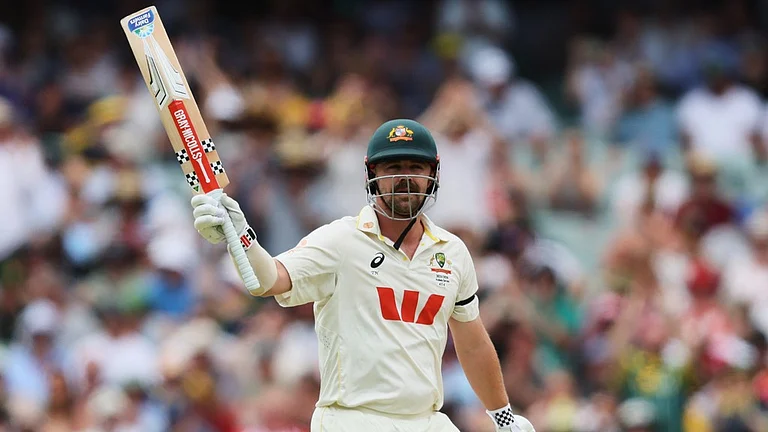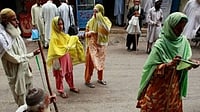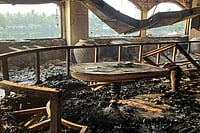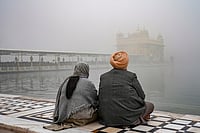- Scenes of Delhi covered in snow in Day After Tomorrow—an exaggerated Hollywood take on global climate change—were dismissed a few years ago as disaster movie drivel. But this past weekend, early morning walkers were startled to find Delhi under a fine layer of frost. North India has experienced the coldest winter in 70 years, with temperatures in the capital on the brink of freezing point. Dal Lake has frozen over for the first time in 20 years.
- Nearly 800 people were killed in the worst-ever floods that hit Mumbai in July last year, when the city had 944 mm of rainfall in 24 hours—right up there with Cherrapunji. Other areas of Maharashtra ran up losses of Rs 2,000 crore.
- Bangalore and Chennai, more prone to water scarcity, were flooded in the last three months. Nearly 50,000 people were evacuated from low-lying areas in Chennai, while India's Silicon Valley was submerged after it rained two days straight.
In recent months, extreme weather events have repeatedly assaulted India. Global studies suggest that weather-related disasters have increased three-fold over the past 30 years. Are these just freak weather events or warning signals of large-scale global climate changes induced by human activities? If global warming is causing all the trouble, then why are winters getting colder? Even as these questions keep nagging away, a debate is raging between scientists and sceptics over whether global climate change is for real.
Says Sunita Narain, director, Centre for Science and Environment: "It's high time the Indian Met department accepts that climatic changes are not just western disturbances." Dr R.K. Pachauri, who heads the Inter-governmental Panel on Climate Change (IPCC)—a body representing 192 governments—too is deeply concerned. "Each of these could well be isolated, part of natural variations of the Earth's cycle. However, in the aggregate scenario, they seem to be part of global climate change due to a disturbance in the balance of nature," he says.
Scientists say this balance—involving the atmosphere, oceans, land, snow and many other components—has been upset by an excess of greenhouse gases (GHGs) such as carbon dioxide, methane and water vapour as a result of urbanisation, industrial activity, agricultural practices, landfills etc. They envelop the earth, trapping much of the heat and causing global warming. Even if we cut back drastically on GHGs now, the damaging effects will linger for years. The World Metereological Organization (WMO) says the rate of warming in the last century has been greater than at any other time. It declared 2005 the warmest year ever!

But if that is so, why is it getting colder, as in North India? Well, GHGs have triggered a rise in precipitation in the Himalayas, causing heavier snowfall in the hills. Chilly winds flowing in from the north transmits the cold to the plains.
The United Nations Framework Convention on Climate Change (UNFCCC) recognises that industrialised nations have contributed the most to GHGs, but it's developing countries like India who will bear the brunt. Warns eminent scientist A.P. Mitra: "In the absence of action, we in India are looking at a disaster scenario on many fronts on a sustained basis."
Scientific data and predictions have established that:
- Global warming will cause a sharp rise in the frequency, intensity and location of extreme weather events.
- Rising temperatures and retreating glaciers—the Gaumukh and other Himalayan glaciers are receding at an alarming rate, says the WWF—will worsen our already bleak water scarcity scenario; our monsoons will become even more erratic, hitting agriculture.
- A sharp rise is foreseen in vector-borne and respiratory diseases.
- Rising sea levels due to melting ice caps and glaciers will flood coasts and destroy ecosystems.
- Between 1990 and 2100, average global surface temperatures will increase between 1.4 and 5.8 degrees. In India, it jumped 0.57 degrees over the 20th century.
- Snow cover has dropped 10 per cent since the late '60s. Glaciers are retreating, non-polar ice bodies melting rapidly.
- Average sea levels rose between 0.1 and 0.2 metres during the 20th century, and is expected to rise between 0.05 m and 0.32 m between 1990 and 2050.




















_.jpg?w=200&auto=format%2Ccompress&fit=max)






